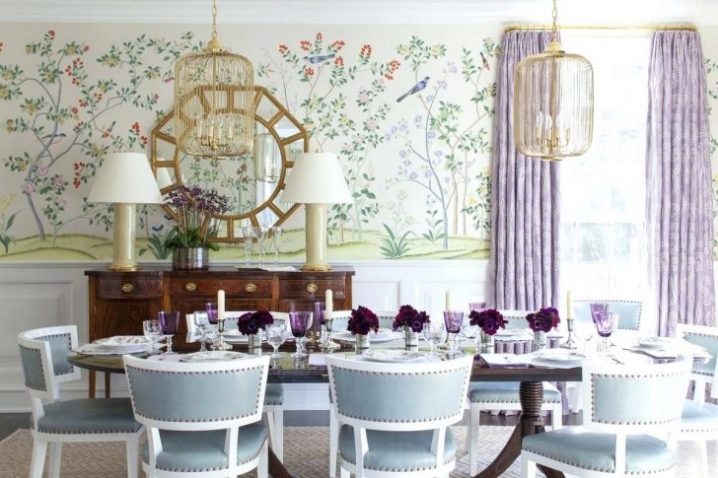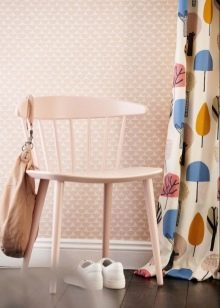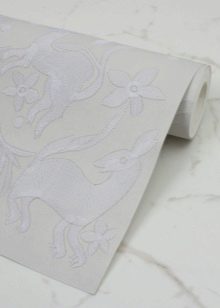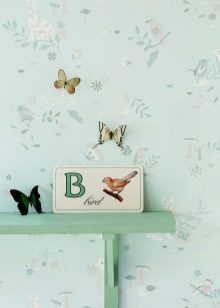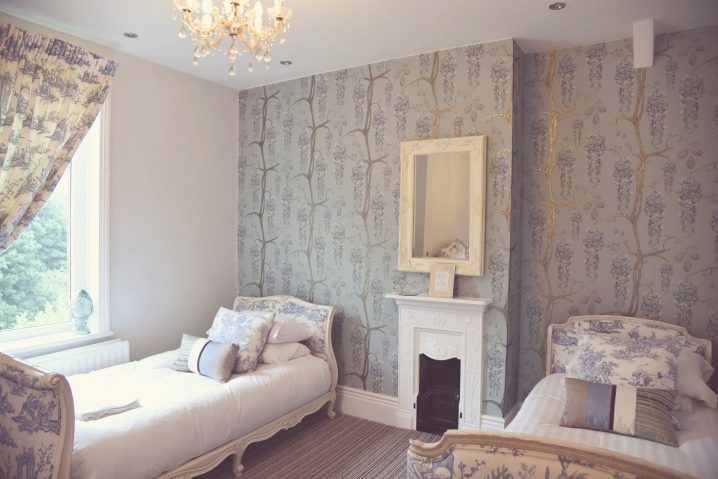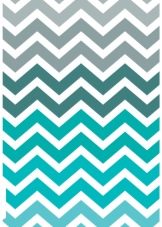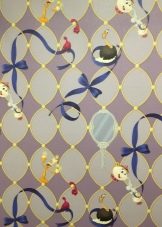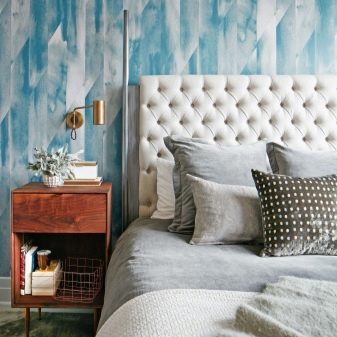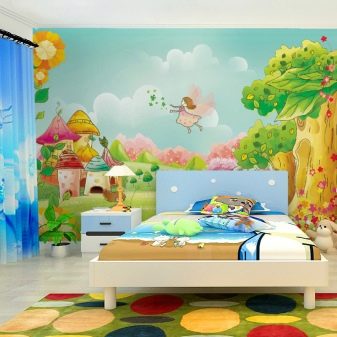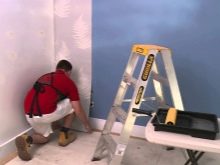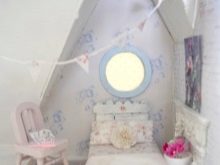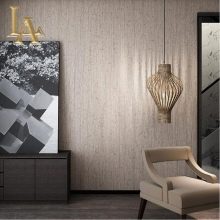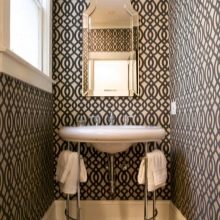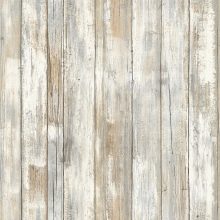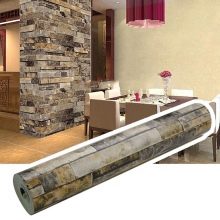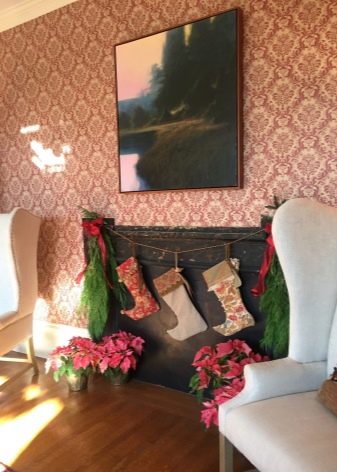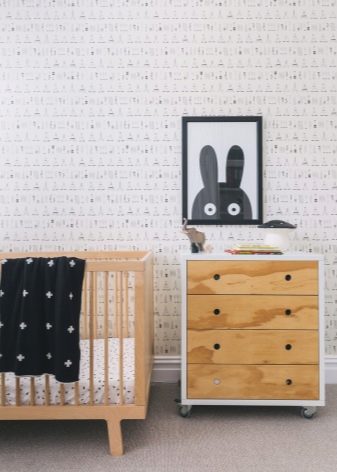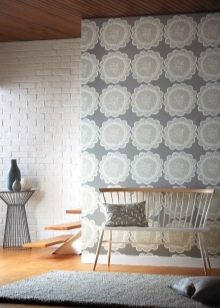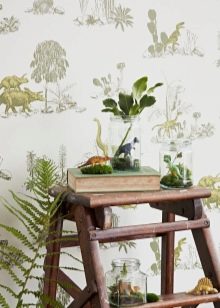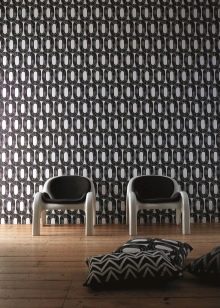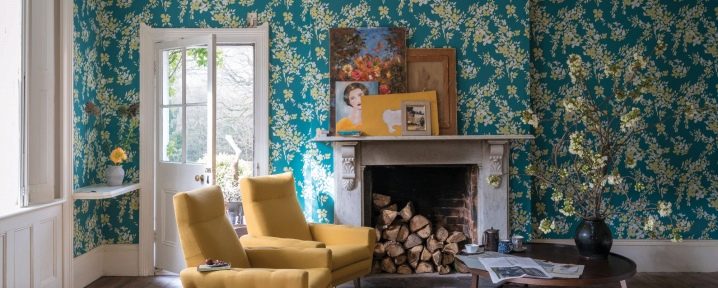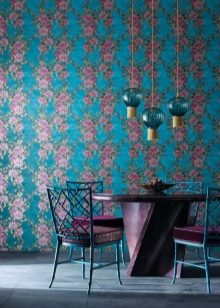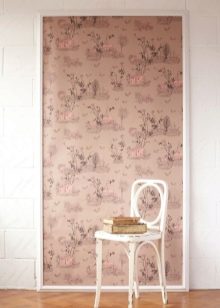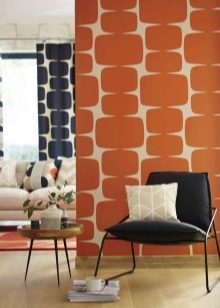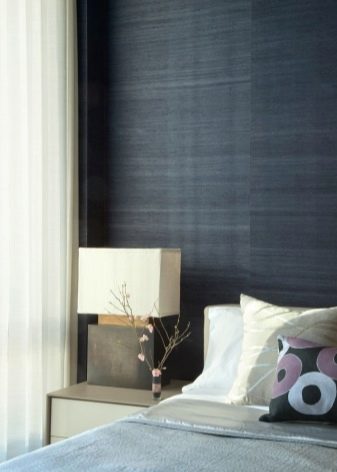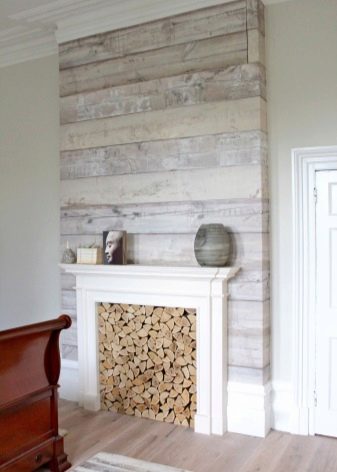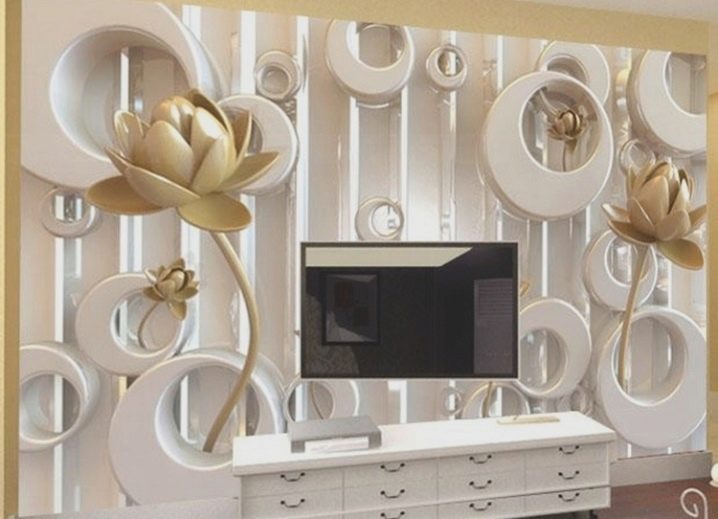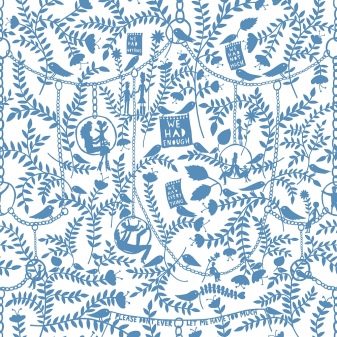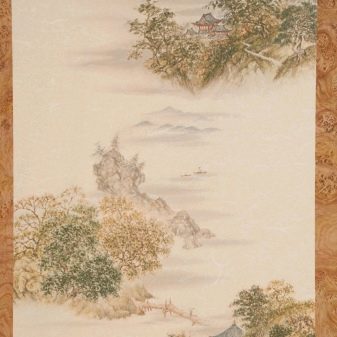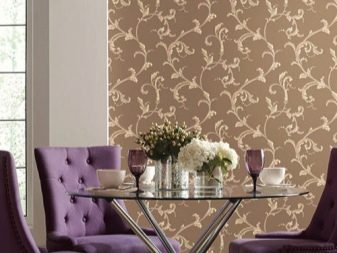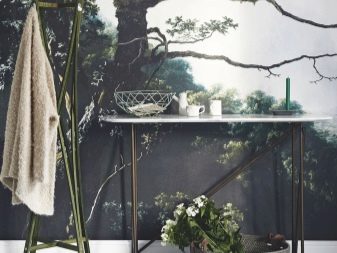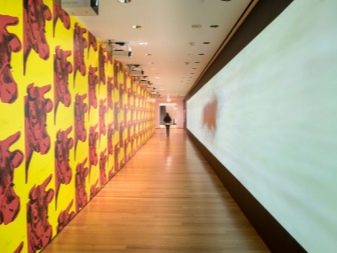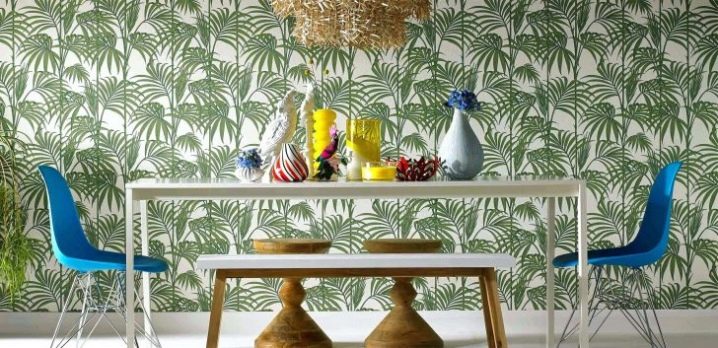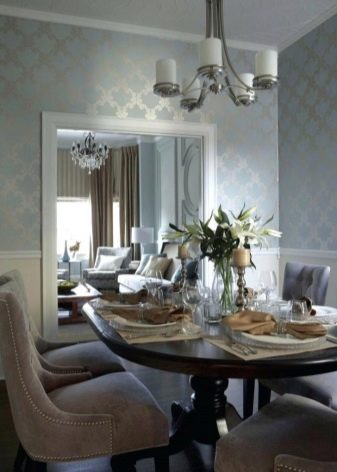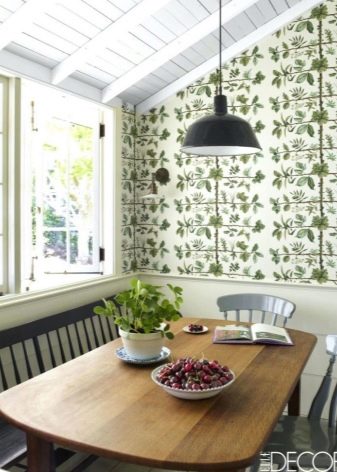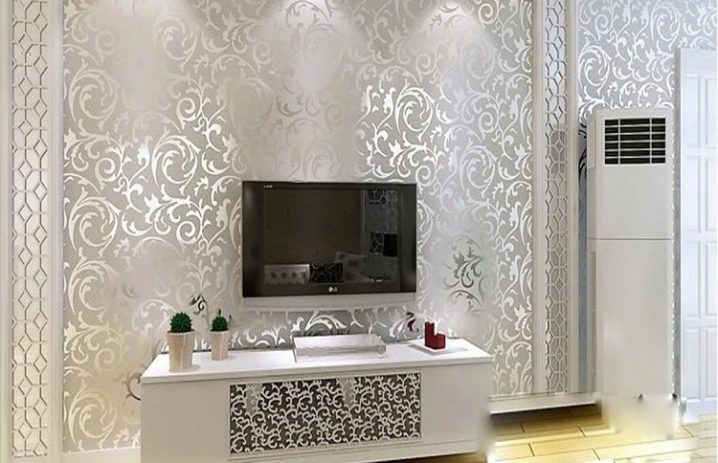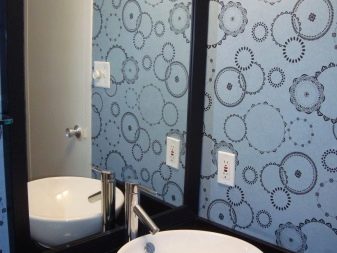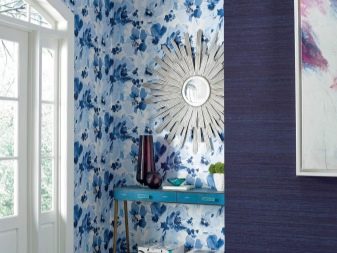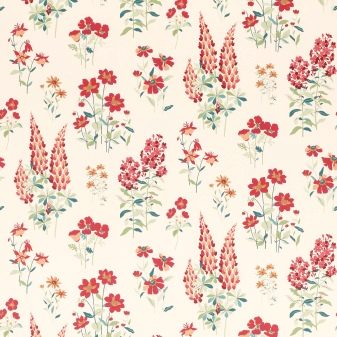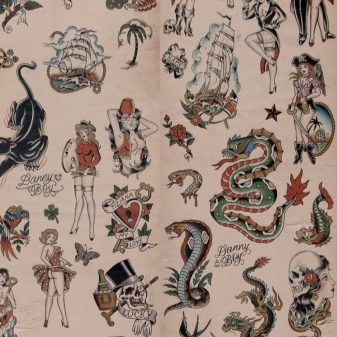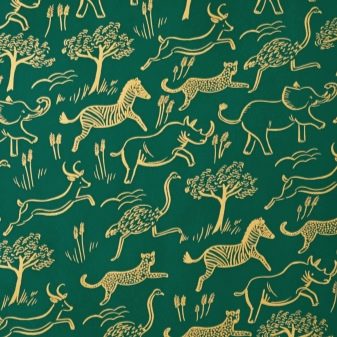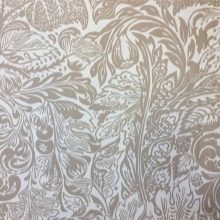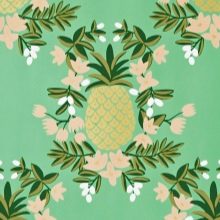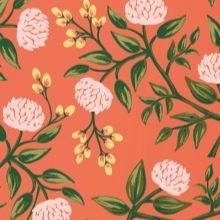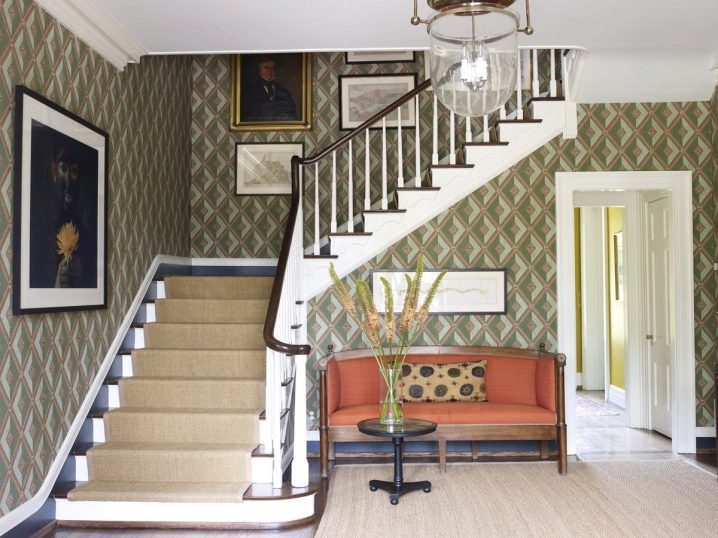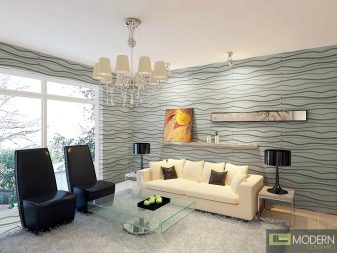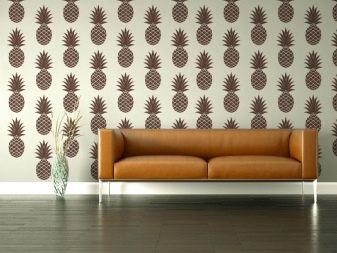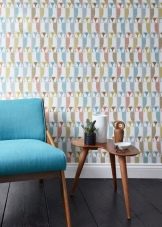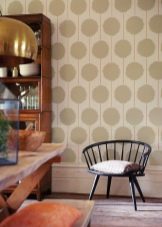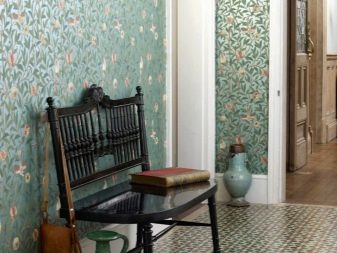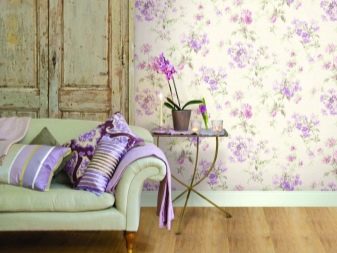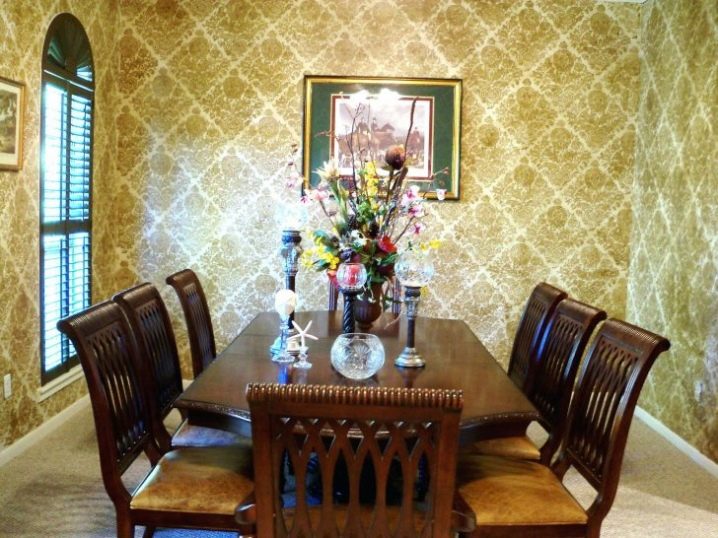Features of the choice of paper wallpaper
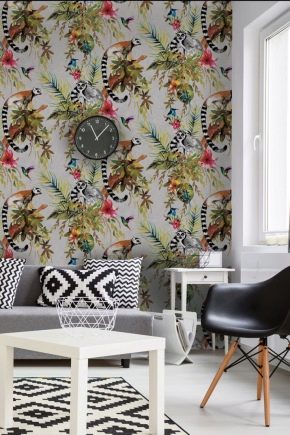
A cozy and beautiful home is the dream of every person who loves to spend his time with his family. Stylish furniture, lighting, and various finishing materials help to achieve this. Knowledge of the features of the choice of paper wallpaper will allow you to quickly and efficiently complement your interior with an interesting wall decor.
What it is?
Paper tapestries are a relatively low cost finishing material for home decoration. The name here speaks for itself and implies the presence of paper in the composition in one form or another.
Kinds
A few years ago, paper wallpapers lost a significant share of the consumer market,since Soviet times, many have become accustomed to thinking of this finishing material as an impractical and disposable subtype. Manufacturers were able to respond in time to such "bells" and actively engaged in the creation and development of numerous varieties with an emphasis on practicality, aesthetics, or even softness.
Paper wallpaper depending on the number of layers are divided into such types as:
- simplex;
- duplex.
Paper base of some types of wallpaper is subjected to manufacturers thorough processing of water-repellent and fixing means. A vivid example of this is the wallpaper, as well as wallpaper washable. The result is a surface that is not afraid of dirt and water, as well as being able to be applied to interior doors, for example, in the bathroom. Vinyl wallpaper on a paper backing can be considered a popular type here. They can be foamed and embossed.
It is worth noting that the wall wallpaper in the hall can have a non-woven base and be supplemented with an upper paper layer. This option also has its advantages due to the properties of the selected raw materials.
Material
As mentioned earlier, the main material for wallpaper is paper. However, it can have two or one layer.
"Simplex"
Single-layer tapestries have one layer of paper, which serves as a substrate and with a patterned face. There is also a two-layer simplex on the market for modern coatings, however, this does not solve the problem of excessive subtlety of this type.
The advantages of the simplex:
- high breathability;
- environmental friendliness;
- the most democratic cost among finishing coatings;
- wide range of colors.
However, often all the advantages overlap the significant disadvantages that prevent them pasting in stylish and modern interiors.
Cons of the simplex:
- for gluing a perfectly smooth surface of the walls is necessary;
- minimum thickness;
- possible distortion of the pattern during pasting;
- the inability to carry out wet cleaning;
- rapid loss of aesthetic appearance and the acquisition of dullness.
"Duplex"
All the drawbacks of the simplex were carefully studied by the manufacturers, which made it possible to create an improved version called “duplex”. Its main difference can be considered the presence of two sheets, one of which is printed image, and the other serves as a substrate, tightly glued with a pattern.I must say that this method greatly helps in the problem of preventing image distortion when gluing tapestries to walls. In addition, double-layered varieties can be produced with various smooth or embossed structures.
On the basis of the duplex was created today demanded kind of paper wallpaper for painting, which in turn also have their own varieties:
- structural;
- with the addition of coarse fiber;
- washable.
Each species has in its composition some innovations. Thus, in the development of structural trellis, binder polymers are used to create a unique embossing with a combination of a smooth and embossed surface.
An interesting and original look can be considered a rough fiber variant. It is based on two layers of paper, between which there are wood chips of different diameters. By pressing, chips act on the front surface of the paper, creating an unusual texture.
Washable wallpapers are complemented with acrylic coating and water-repellent compositions, which makes the model relatively resistant to mechanical damage.However, of course, even several layers of paper are afraid of scratches, and therefore other raw materials are often found in the composition.
Vinyl wallpaper is a paper backing coated with polyvinyl chloride, which allows you to apply any convex pattern to the surface or, on the contrary, add smoothness.
Flizelinovy basis - one more successful combination with paper. Flizelin is a complex of nonwoven materials that are distinguished by their density, resistance to mechanical damage and environmental friendliness.
Not very popular, but very aesthetic materials are also used as a facial material on a paper basis:
- bung;
- textile;
- metal.
Textile wallpapers have a presentable look with a hint of luxury. Indeed, they are often used precisely in classic interiors, complementing with monograms. Among the advantages include:
- high level of thermal insulation;
- insulation;
- high wear resistance;
- a wide range of materials from simple linen to textured velor.
However, textile wallpaper also did not avoid drawbacks, because the accumulation of dust in them is great, and wet cleaning is an inaccessible procedure.
A new trend in the field of wall coverings can be considered as cork tapes on a paper basis. The veneers of natural woods are applied on paper here, making the wallpaper not only environmentally friendly and hypoallergenic, but also very warm and protects against noise. The cost of the trellis is high, which is for some significant disadvantage.
Another new and not yet very popular look is metallic wallpaper. The base of the paper here is covered with a thin layer of silver, gold or bronze foil, subsequently going through the embossing procedure. The final result is striking in its sophistication and complexity of halftones. Among the shortcomings, the high cost of the material again stands out, adding to the ease of mechanical damage.
As you can see, modern paper wallpapers are the opposite of boredom. A variety of tandems of raw materials has breathed new life into the paper, and therefore it will not be superfluous to look at them to every person who has started changing the interior.
Dimensions
The dimensions of the roll for wallpaper are important when choosing. Firstly, the ease of sticking depends on this, and secondly, knowledge of the size of the roll allows you to accurately calculate the required number of rolls for the room.
It must be said that professional masters of tapes of the tapestry with confidence say that it is easier and simpler to glue wide meter rolls, and the result is more accurate. The inhabitants, on the contrary, consider a small width of half a meter convenient for an independent procedure of interior transformation. Nobody canceled the question of taste here.
Duplex and simplex paper wallpapers are 53 cm wide in most cases. Vinyl and non-woven base models are most often offered by manufacturers in sizes of 106 cm. Italian and other foreign tapestries of the highest quality are mainly 70 cm wide.
The length of rolls of domestic manufacturers, as a rule, is 10 meters. Sometimes there are rolls with a maximum length of 15 and 25 units.
The choice of colors and colors
If the varieties of tapestries in the criteria of materials and sizes can be classified into a small number of groups, the types of color palettes are endless. So, today complex blue and green tones are popular, as well as lilac color in all its manifestations. Designers strongly recommend not to be afraid of dark colors and a variety of prints, because when combining wallpaper, they will not be able to weight or reduce the space.It is worth noting that the monochrome tapestries of multifaceted tones look luxurious and stately, overshadowing any prints.
Colors and prints in recent seasons have become bolder. Large images of flowers, abstractions and objects familiar to us today are bright and multicolored. Even a classic today can have several tones. So, the wallpaper of brown color and yellow golden monograms on them represent an interesting and discreet tandem.
How to calculate?
Today, there are special online calculators for calculating the number of rolls, taking into account all the characteristics. However, if you wish and have a precise understanding of the issue, you can do without them.
Algorithm of calculation:
- measurements of the perimeter of the room, including niches;
- measurement of the height of the area to be glued (up to the plinth);
- awareness of the exact size of the selected wallpaper;
- adding a stock to each sheet of at least 50 mm;
- study of the height of the picture or report, as well as the distance of its vertical displacement.
On the report and its features worth a stop. Under the condition of a pattern that does not require matching, for example, vertical stripes, you should not think about the height of the pattern and the image itself.The number of rolls here is selected strictly depending on the perimeter and height with the addition of allowance.
In the case when there is a drawing and you need to dock it, you should be ready that you will have to cut 30, and sometimes 50 cm from the initial length of the roll. As a rule, accurate information can be seen on the label of the wallpaper, consciously deciding for yourself whether such expenses are necessary.
And even when the number of rolls is carefully calculated and contains the necessary centimeters for matching and allowances, one should not forget or consider the use of one spare roll to be useless.
Characteristics and properties
Like any finishing material, wallpapers have their own technical characteristics, among which you can meet:
- density;
- weight;
- degree of moisture resistance;
- structure.
Thermal insulation properties, masking of small wall irregularities, as well as weight depend on the density of the wallpaper. The choice of glue directly depends on the mass of the wallpaper.
The composition of the wallpaper significantly affects their weight. The easiest are paper simplex wallpaper, whose weight is only 110 g / m2. The heavy category includes vinyl and non-woven tapestries weighing up to 140 g / m2.Heavy wallpaper for many look more presentable than light due to its complex structure.
The degree of resistance to moisture has its own varieties, among which can be found:
- washable wallpaper;
- moisture-proof wallpaper;
- classic.
The first and second types are close to each other, however, moisture-proof wallpapers can be wiped only with a damp cloth, removing dust from the walls, while washable tapestries are not afraid of cleaning products. Classic wallpaper does not accept moisture, which is not an obstacle for some rooms, for example, a bedroom.
Decor
Embossed vinyl wallpaper on paper base looks aesthetically and qualitatively. Here, a pattern or a filler pressed between the sheets with a unique structure can act as embossing. Corrugated trellis simplex, unfortunately, can never be compared with them.
However, the most inexpensive wallpapers today are complemented by amazing prints. Models with birds and flowers are incredibly popular and in demand, because they create a particularly homely and warm atmosphere. Stars on the wallpaper are able to create interiors in such themes as space, American style, childhood and zodiac magic.
Models under wood, brick, bamboo or natural stone also have their own unique energy, especially if they used natural veneer. Soft vinyl bricks are also able to create a colorful and safe environment.
Style and design
The style of paper wallpaper today is not inferior in design to any other advanced trellis. Some styles completely lose their meaning without the use of classic paper. So, the retro style with the famous wallpaper in the flower is unlikely to be so simple and nostalgic in silk-screen printing and bulk vinyl. It also calls Provence for ingenious simplicity, recommending to choose wallpaper with floral motifs or monochromatic simple variants to accurately display that era.
Metal wallpapers have already managed to enter into ideas for modern high-tech style. Natural veneer and cork on a paper basis occupied their honorable niche in country styles and loft. Textiles on paper backing traditionally entrenched with the classics.
How to choose?
To select high quality tapestry with paper in the composition should pay attention to the following criteria:
- rolls must be carefully sealed;
- the batch of rolls must match to avoid changing the tone;
- roll thickness must be identical.
In addition, experts recommend purchasing moisture-proof and washable wallpapers for corridors, leaving an exceptional naturalness for renovating the interiors of bedrooms and nurseries.
Advantages and disadvantages
The advantages of paper wallpaper can not be overestimated, because they are the only budget and the most environmentally friendly coating. With their cost, they overlap the low lifespan, allowing the wallpaper to be glued once every 3-5 years without a burden on the family budget.
The disadvantages are also present here:
- wallpaper afraid of mechanical damage;
- may tear or stretch when pasting;
- their natural variation does not accept water;
- fade in the sun.
Nevertheless, modern coatings and fillers solve almost all the problems associated with the paper base.
Well-known manufacturers and reviews
Russian-made wallpapers can be found everywhere today, and, as a rule, their cost will be significantly lower than the prices of foreign brands. Anyway, product reviews are positive, and such brands as are very popular:
- "Saratov Wallpaper";
- Alfresco with the widest selection of photo wallpapers;
- Avangard;
- "Elysium".
German company Marburg and Rasch enthrall connoisseurs of wall coverings of European quality. According to users, they are very easy to glue. Their cost is high, but in terms of discounts, you can buy models at an affordable price.
Belarusian wallpapers are represented by a large and powerful holding of the same name. Today it includes such brands as Beloboi and Gomeloboi, pleasing consumers in Belarus and Russia with good quality, a wide range and low price.
American wallpapers are popular among Russians. Brands like York offer stylish and vibrant options of excellent quality at an affordable price, which is rare for foreign brands.
Elite examples and collection options
Stylish wallpaper in cold colors in the interior of the Provence become the main focus of the whole room.
Wall-paper of a complex many-sided tone with a stamping - a trend of the last season.
The tapestries of the American brand with floral motifs surprise with the complexity of pastel colors against the background of ornate patterns.
Tips
Whichever type of wallpaper is chosen, it is important to properly prepare the walls to be pasted, pre-plastered and primed. It is also worth remembering that paper wallpapers quickly get wet, and therefore glue should be applied to them in moderate layers, acting as fast as possible.
Experts do not recommend fear when sticking small air bubbles. The fact is that paper wallpapers always bubble, however, after drying the paper shrinks and masks all the old bubbles. It should be said that the tapestries dry quickly, and therefore the process will be as easy as possible.
On the properties and features of paper wallpaper, see the following video.
